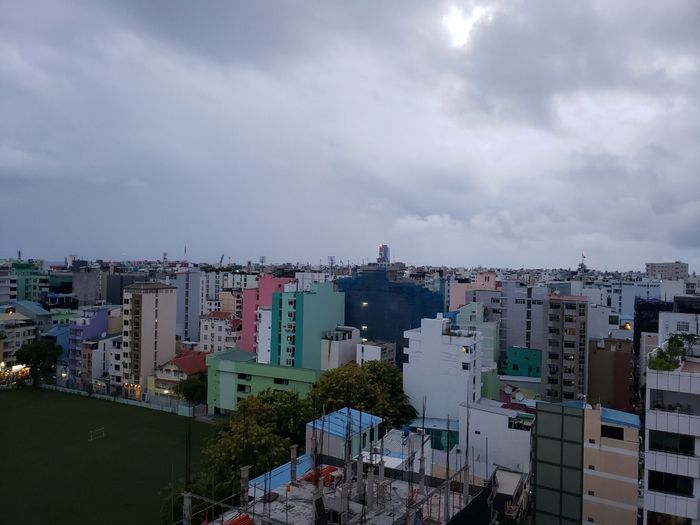In the Maldives, the tourism industry is touted as the goose that lays golden eggs. According to the World Bank, the Gross Domestic Product (GDP) per capita ballooned from 600 USD in 1985 to over 9,000 USD by 2017. The nation graduated from one of the 20 poorest countries in the world in 1980 to a middle income country by 2017. A quarter of the overall GDP comes from tourism. While the country got rich, the majority of the population got poor in comparison. Centralization policies and the excessive tourism development on uninhabited islands benefit only a chosen few.
Centralization on Male’
The Maldives consists of more than 1200 islands - 188 of them are inhabited – stretching over more than 750 kilometres. Fifty years ago, inhabitants of the islands in the north and south were living a prosperous life based on agriculture and fishing. Raw materials for agricultural products were collected from forest areas of inhabited islands as well as uninhabited islands nearby. Direct trade with neighbouring countries flourished. Common goods exported included coir rope, coconut, and other agricultural products as well as value added items made from fish, such as dried or salted fish. However, halting of direct trading activities from various islands to foreign countries due to centralization of commerce and transport in Male caused decline of local agriculture and fish processing based on a vibrant small holder industry, leading to loss of livelihoods – particularly for women and youth.
Crowded Capital
At the same time, the government started to develop tourism in uninhabited islands close to Male’ and to centralise basic services in the capital. This paved the way for development induced migration in the search of jobs, education and health services. The exodus of natives to Male’ emptied some of the biggest islands, such as Hithathdoo in Addu atoll. While 100 years ago, only 9 percent of the population lived in the capital, today 38 percent reside there. The tiny island with barely 2 km2 in size is crammed with more than 130,000 inhabitants.
Report after report gets published on socioeconomic problems created especially in Male’. With a population density of 65,201 per km according to National Bureau of Statistics of Maldives, Male’ is the place where the Maldivian Dream comes to die: The dream of living in dignity with your family in your home island doing productive work and contributing to prosperity of your community and its people, the dream of quality of life as enjoyed by the tourists occupying many prime beaches, islands, lagoons and sandbanks. The natural resources and their beauty are fast becoming a privilege for tourists.
Benefits for a chosen few
The allocation of land including declaring uninhabited islands for resort development remains with the head of state. The laws introduced for open and more transparent bidding were reversed in 2016 to allow closed bidding again ensuring the industry is back to its old undemocratic ways. Hence ownership of resorts mostly rests with elites and executive faction of society that mainly resides in Male’ and overseas. Successive governments keep on amending laws, to benefit tourism tycoons, giving most islands in Male’ and nearby atolls to tourism. From 970 uninhabited islands in the Maldives 304 islands have been allocated to tourism, as of 2018. Be it children’s playground like Feydhoo Finolhu or the local picnic island like Kuda Bandos in Male’ atoll, the government gave them all with little consideration of the needs of locals, their wellbeing, their food security, as well as cultural and social rights. The tourism industry provides very little income opportunities for Maldivians – it has restored to employing foreigners which account for 58 percent of resort employment as per latest census data.
Needs of the residents
What the island communities in Maldives are asking is simple: Stop land grabbing! Stop reclaiming lagoons for profit purposes! Do not give all uninhabited islands to tourism. Stop killing marine life, stop killing our source of food. Give us back our livelihood. Let us invest in food security, do not steal our picnic islands. Leave something for the birds; leave something for the fish to breed. Preserve and protect these resources for future generations! Is this too much to ask?
The new coalition government of Ibrahim Mohamed Solih has promised to empower island communities by allocating part of the revenue generated within the atolls to island councils as well as giving the jurisdiction of land and nearby uninhabited islands to councils. However, the task of correcting past wrongs like freeing some islands for community use in atolls will not be easy. As long as the same big businessmen that control these islands also sit in the parliament and resist fair distribution of natural resources. A redistribution policy that benefits the natives is crucial for sustainable development in the Maldives.
Muna Mohamed is a Maldivian author and a blogger on forced migration, land grabbing, and management of natural resources for sustainable development to safeguard rights of communities.


